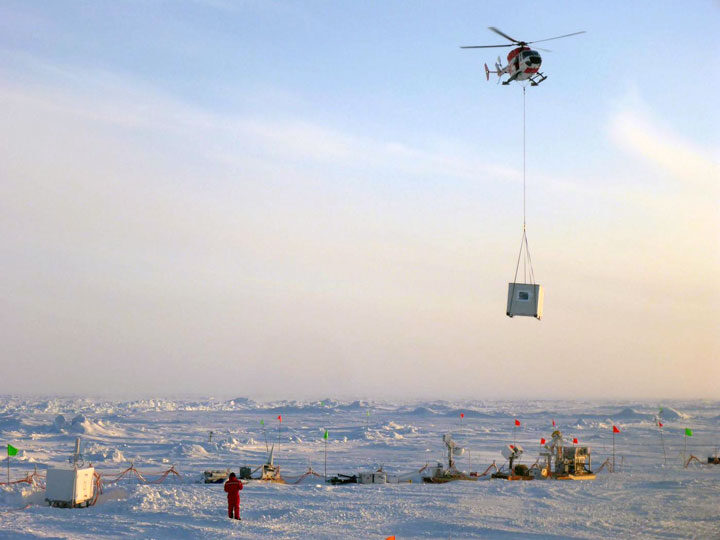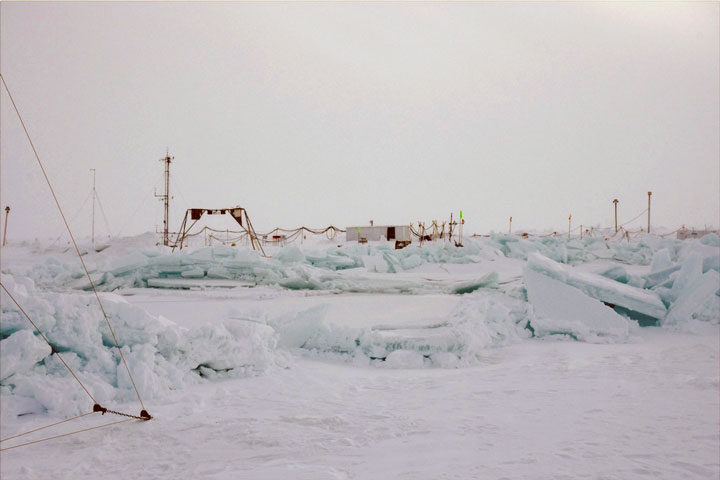
The leads that formed the last weeks throughout the floe continue to have an impact here on MOSAiC.
The wide lead that split off two sites from the rest of the central observatory started to close again, forming a large ridge that threatened some of the instruments and huts that were out on the ice. Knowing that a storm could re-open the leads or force the ridge to grow even larger, we decided to hold a rescue operation to move any instruments that were too near to the ridge to safer ground.
That morning, the logistics team scouted the ridge and eventually found a safe location to cross it on snowmobile. With the go-ahead from logistics, a large team of almost 20 people headed over to save the instrumentation. It was just in time – one instrument was beginning to be crushed, while others were too close to the ridge for comfort. I was working at the Remote Sensing site, where we employed shovels, snowmobiles, and even a helicopter to move everything to safety.

It took all day and a lot of heavy lifting, but we managed to disconnect power lines, dig out sensors that were beginning to be covered by snow, and move all the equipment back away from the ridge. Some sensors that were not working and couldn’t be accessed for a few days because of the lead were able to be returned to near the ship where they could be fixed. The Met city team also had a successful instrument rescue day, saving a 25-meter tall tower that was just a few feet from a lead.

It’s tough to call today a “success,” since many instruments had to be powered off and many measurements had to be stopped to complete this work. In the long run, however, this action may have saved many sensors from total loss, allowing measurements to continue throughout MOSAiC.



